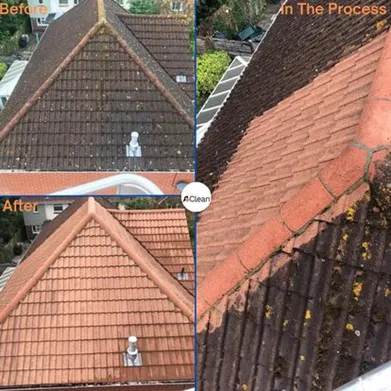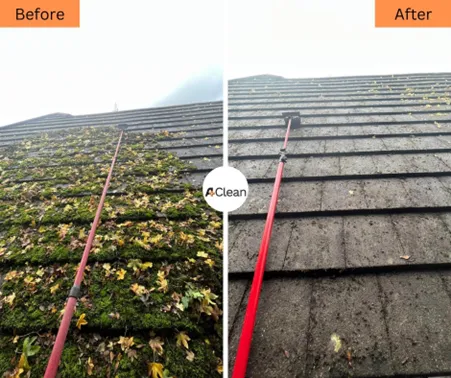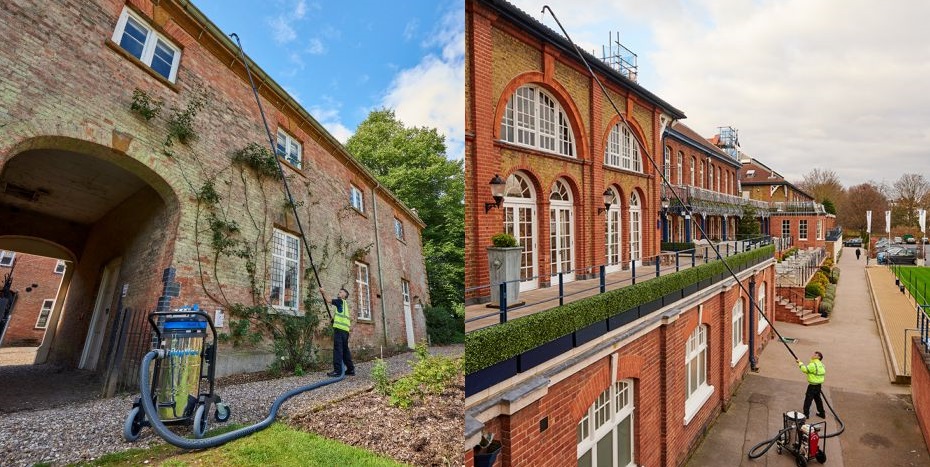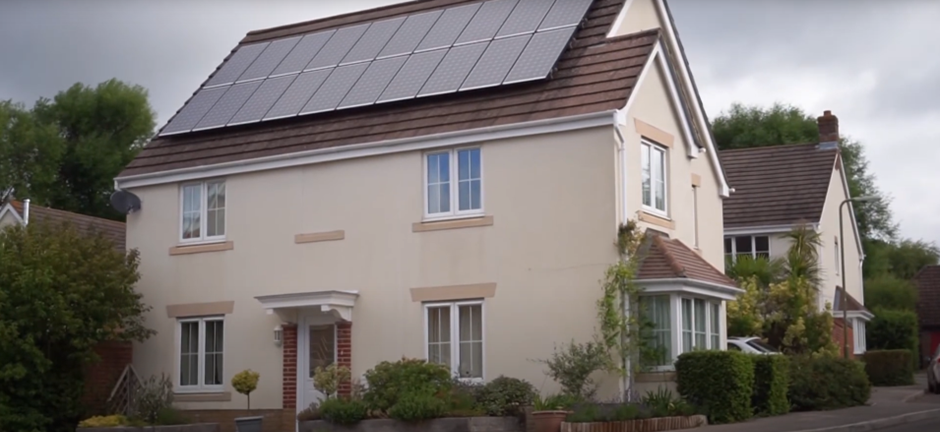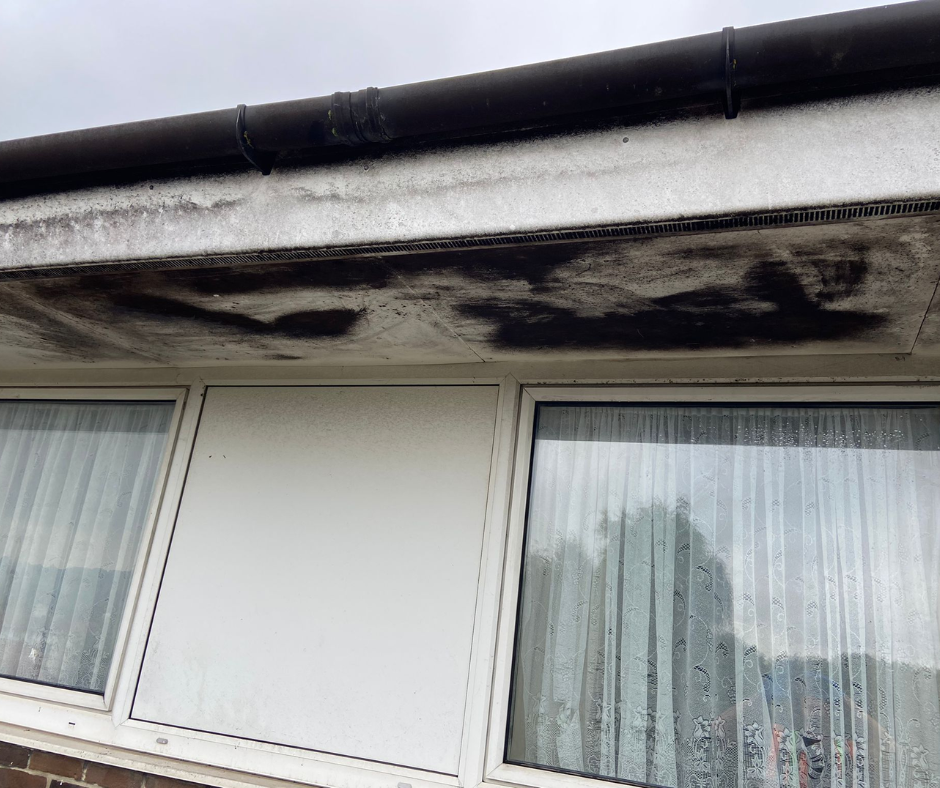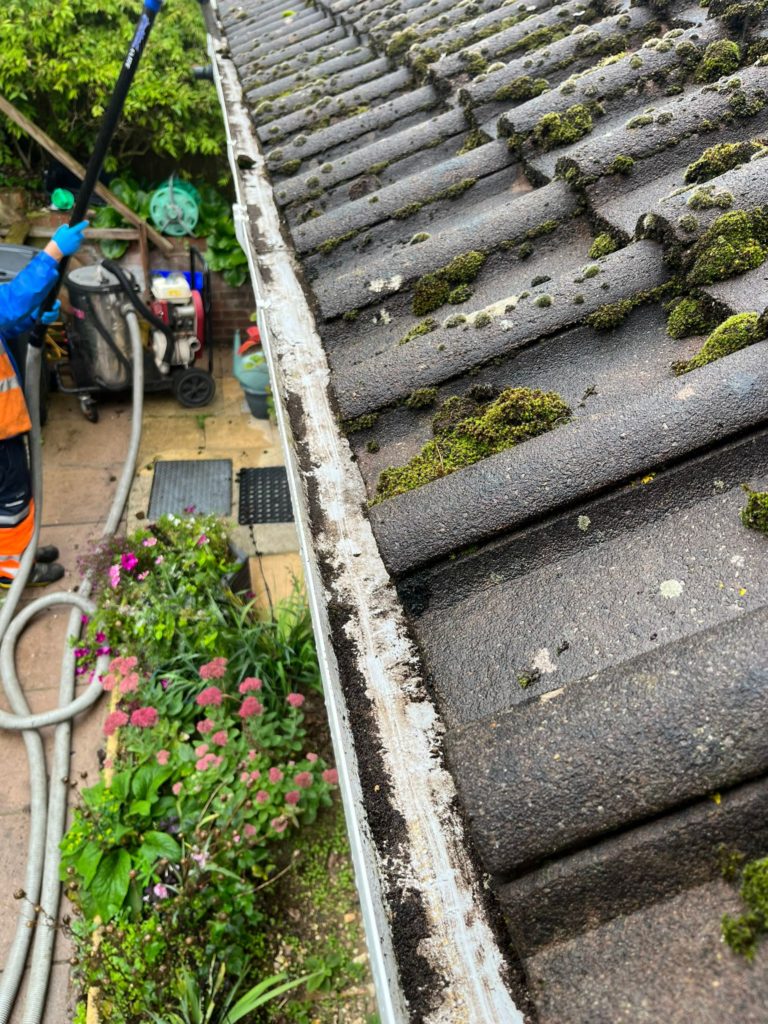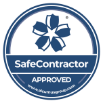Can bacteria, roof algae, moss or lichen cause roof damage?
Your roof is one of the most important parts of your home. It protects you from the elements and can greatly affect the overall look of your property.
Unfortunately, if it’s not taken care of properly, bacteria, algae, moss, and lichen can cause damage to your roof. To avoid this kind of damage, you must take steps to eliminate these harmful organisms that grow on your roof.
Throughout this article, we’ll discuss the possible damages that can be caused by the algae, moss, bacteria and lichen growth on your roof and share tips to protect your roof from these destructive organisms
6 Ways Bacteria, Moss growth, Lichen, and Algae Can damage your Roof
- They can form colonies that are thick enough to trap moisture
When bacteria, black algae, moss, or lichen colonise a roof surface, they often form thick layers of growth. These colonies can trap moisture that would otherwise evaporate into the air. This trapped moisture can slowly seep into the roof, leading to decay and eventually cause holes in your roof and damage to your roofing system.
Additionally, trapped moisture can lead to:
- The materials of your roof deteriorating and rotting, causing threats to your roof structure.
- The leaks in the roofing material allow water to penetrate the house.
- Create an ideal environment for mould and mildew growth, which can lead to air quality problems in the home if left untreated.
Removing moss on your roof is highly recommended as moss absorbs water. Moss is similar to a sponge. If the moss on your roof has absorbed water, it may make the roof unstable under the additional weight. To prevent moss from damaging your roof and prevent future problems, you should get it removed and the roof treated to stop moss from growing back.
- They can release chemicals that eat away at asphalt shingles or tiles
Bacteria, roof lichen, roof moss, and algae growth can cause damage by releasing chemicals that break down concrete. As they grow and spread, they can release acids and other substances that erode the protective surface layer of your roof.
This chemical breakdown process is known as “biogenic weathering” and can damage your roof in the long run. If you don’t remove things like algae from your roof, you risk problems such as roof leaks.
- They can clog gutters and downpipes
Gutters and downpipes play a vital role in keeping the water away from your roof and home. Unfortunately, they can quickly become blocked by bacteria, algae, moss and lichen if left unchecked.
These organisms can take root in the gutters, trapping debris and making it difficult for water to pass through. This can cause the gutters to become overfilled and spill out onto the ground. If left unchecked, this can cause water to pool around your house and even seepage into the foundation or basement.
To prevent clogging:
- You should keep your gutters and downpipes clean of any debris or buildup of algae and moss. You can also do this by regularly inspecting them and removing any buildup you find.
- Additionally, it is also important to trim any vegetation that may be growing around your gutters, as this can contribute to their clogging.
- They can trap heat and hasten deterioration
When bacteria, algae spores, moss, or lichen form colonies on your existing roof, they can create an insulating layer that traps heat and prevents the roof from cooling down properly, creating poor roof ventilation.
This increased heat can cause the roof to expand and contract faster than it usually would. With each expansion and contraction cycle, the roof’s structure is weakened, and accelerated deterioration occurs.
This is especially dangerous when the roof is made of concrete shingles or clay tiles, which are more prone to becoming brittle with age. This trapped heat can also cause a loss of insulation and make it difficult for the roof to resist ultraviolet light.
- They can provide a foothold for larger organisms
These harmful organisms also create a foothold for larger organisms to attach to your new roof. This will worsen if you don’t deal with roof algae and other harmful elements.
This can include trees and other plants, which can eventually cause significant damage if left to stay on your roof and can be difficult to remove. The roots of these plants can penetrate the material of your roof and cause extensive damage.
Over time, the plants will absorb moisture, and their roots will spread through the material and eventually cause cracking, splitting, or crumbling of your roof.
Not only can this make your roof structurally weak, but it can also cause moisture to penetrate further into the layers of your roof and damage the materials beneath.
- It can make your roof and home unattractive
Due to these organisms, your roof looks dirty, patchy, and less appealing. In some cases, growth can be so pervasive that it completely covers the entire surface of your roof and takes away from the overall aesthetic of your home.
Additionally, types of roof bacteria, moss or lichen in particular, can trap dirt, dust, leaves, and other debris and hold it to the surface of your roof, which further reduces the curb appeal of your home and causes roof problems.
How to keep your roof clean to remove and prevent moss, fungus, algae, and Lichen
Here are some of our top tips to keep your roof clean from harmful organisms such as algae and fungus.
- Clean your gutters and downpipes regularly. By ensuring water is flowing off your new or old roof correctly, you can help prevent the growth of these harmful organisms on your roof surface.
- Focus on signs of moss, algae, lichen or bacteria and clean them off as soon as they appear. To prevent the sun from burning your roof, you should kill moss and stop growing lichen.
- Install zinc strips along the peak of your roof. The zinc strips release small amounts of zinc oxide when wet, which kills and prevents the black stains or streaks common on roofs with concrete tiles or metal roofs.
- Trim tree branches away from your roof. Branches and leaves create a moist environment that encourages the growth of bacteria, moss, algae and lichen.
- Apply fungicide to your roof. Fungicides are formulated to kill off bacteria, moss, lichen, algae or fungus.
- Repair any cracks or damage in your roofing material. This will help reduce the likelihood of moisture seeping into your roof and causing further damage.
Book a roof inspection and see what types of roof bacteria could be causing you a problem
It’s important to regularly inspect your roof and take preventive measures such as keeping the roof free of debris, installing zinc strips, maintaining proper ventilation, and trimming trees and shrubs around the house.
If you don’t know about roof care or don’t have safe access to your roof, call in a roof cleaning professional who can advise how to make your roof as good as new.
Find out more about our roof cleaning services. Get in Touch

